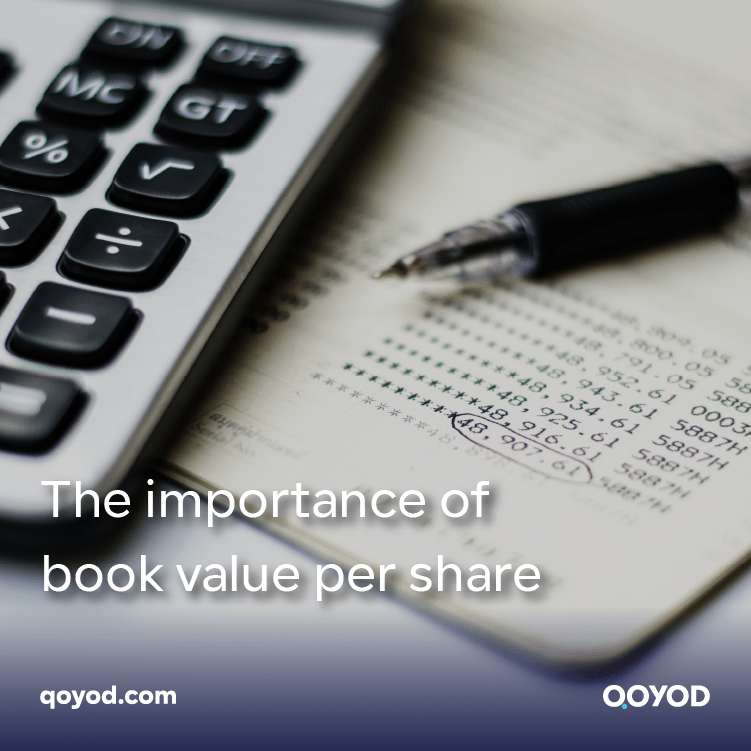The book value of the share is used to evaluate, analyze, and select the best shares for investment.
It helps to measure the value of companies at the price of the share but does not reflect the actual value of the company.
It may show that the share is expensive, while in fact the price is lower than the real value of the company.
That value is based on the financial reports and accounting results of the organization.
The profits of the company are distributed to the shareholders upon liquidation according to the value of the book share.
In this article, we will give you all the information you want to learn about the definition of this kind of value, its benefits, how to calculate it, and many other important things. Follow with us.
What is the book value of the share?
It is the accounting value of an asset recorded in the accounting book according to the balance of its balance sheet account.
It refers to the liquidation of the stock or its intrinsic value.
It depends on the original cost of the asset minus any impairment costs or depreciation costs.
This value may include moral assets, fame, or both, and when excluded, the metric system is determined to be the physical book value.
Book value per share benefits
Book value per share refers to the value of an asset or company based on data and statistics rather than opinion or speculation.
This value is therefore very useful in trying to find shares of fair value or in knowing much about a company.
How to calculate book values
The calculation of the book value of the share differs from that of companies, as the book value of the stock can be calculated by dividing the book value of the company by the number of shares.
While the book values of the company are calculated through the company’s total assets minus the company’s liabilities,
A company’s fair value can be determined by comparing market and book capitalization.
The book values do not reflect the true value of the company.
It should be noted that the book value of the share is often different from the market value.
They are not very relevant to investors who do not aspire to buy securities.
How can the book value per share be used to evaluate companies?
Book value per share is used to evaluate companies and calculate investment costs before making buy and sell transactions through the index, which calculates the ratio of market share price to book value.
To make sure that these companies balance their market shares.
Through book values, an investor can determine if the share price is higher or lower than that value.
Thus, whether or not the share price is high, and whether it is positive or negative, is determined.
What is the difference between market value and book value?
The market value means the value of the company according to the share exchange, while the book value means the value of the company according to its financial statements or books. In order to learn the actual difference between them, continue:
1. Company Market Value
The market value of a company is calculated by multiplying the current market share price by the company’s shares as a whole.
This value is constantly changing with equity trading for investors.
It should be noted that it is difficult to predict the actual market value of the company.
2. Book value of the company
The book values of companies are calculated as the value of the company’s total net assets minus all of the company’s liabilities, as this is a more accurate assessment of the company’s value.
How do you determine a company’s fair value by comparing book values and market values?
Investors can determine the fair value of the company by comparing book and market values by:
- Analysis of profit growth: The investor can compare the growth of the sector with the growth of the company, as well as the growth of the company’s profits according to the previous year.
- Calculation of the ratio between market value and book value: the ratio between market value and company book value can be calculated, and if less, investors prefer to invest; the book value is known to be higher than the share value.
- Liquidity analysis: investors analyze the company’s liquidity so that they can identify and invest in the value of available assets.
- Profit accounts: Investors can examine the company’s net profits and profit accounts in order to assess its ability to return the investment.
- Comparison with competitors: The market value and book values of the company are compared with those of competitors in the same sector so that it is determined to be ready and competitive for growth.
- Assessment of future growth prospects: it is likely that the company’s future growth prospects will be assessed by previewing future investments and strategic plans.
- Analysis of growth opportunities: analyzes and invests in existing growth opportunities.
- Valuation of current financial position: Investors can assess a company’s current financial position by looking at how that company competes with other companies and analyzing the industrial sector in which it operates.
- Profit-generating capacity: The ability to generate corporate investments and profits has been analyzed in recent years.
Conclusion
It can be said that the book value is the net value of the company after deducting the obligations from its original price.
That value is used to determine the price-to-profit ratio of the company and the fair value of the share.
In addition, they assist investors in assessing firms and optimizing investments.
At the end of this article, we would like to point out the importance of the Qoyod program, which is the best accounting program.
Qoyod is a cloud accounting software that offers you unique features such as book value issuance, inventory management, electronic invoice systems, and a POS system.
What are you waiting for? Try Qoyod now for free for 14 days.




